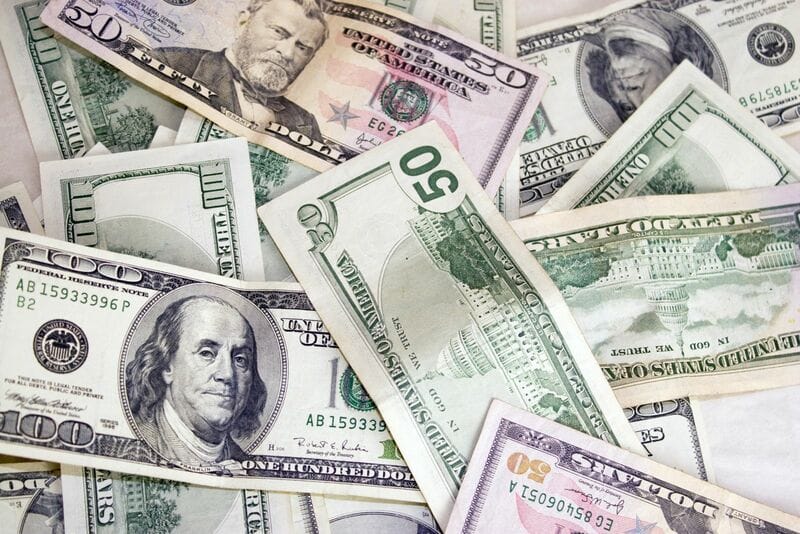
The dollar index (DXY00) Tuesday rose by +0.50%. Weakness in the yen supported the dollar as the yen Tuesday tumbled to a 1-year low against the dollar after the BOJ maintained record low-interest rates and reaffirmed its bond-buying program. Also, weaker-than-expected Eurozone economic news weighed on the euro to the dollar’s benefit. Gains in the dollar were limited by the likelihood that the Fed will keep its monetary policy unchanged at the Tue-Wed FOMC meeting.
Tuesday’s U.S. economic news was mixed for the dollar. On the supportive side, the Q3 employment cost index rose +1.1%, stronger than expectations of +1.0%. Also, the Aug S&P CoreLogic composite-20 home price index rose +2.16% y/y, stronger than expectations of +1.75% y/y and the biggest increase in 7 months. On the bearish side, the Conference Board U.S. Oct consumer confidence index fell -1.7 to a 5-month low of 102.6. Also, the Oct MNI Chicago PMI unexpectedly fell -0.1 to 44.0, weaker than expectations of an increase to 45.0.
The markets are discounting a zero percent chance that the FOMC will raise the funds rate by +25 bp at this week’s FOMC meeting (Tue/Wed), a 27% chance for that +25 bp rate hike at the following meeting on Dec 12-13, and a 40% chance for that +25 bp rate hike at the FOMC meeting after that on Jan 30-31, 2024. The markets are then expecting the FOMC to begin cutting rates later in 2024 in response to an anticipated slowdown in the U.S. economy.
EUR/USD (^EURUSD) fell by -0.09%. The euro on Tuesday fell moderately lower on weaker-than-expected economic news on Eurozone Q3 GDP, Eurozone Oct consumer prices, and German Sep retail sales that are dovish for ECB policy. EUR/USD remained under pressure on dovish comments from ECB Governing Council member Stournaras, who said he would consider cutting rates in mid-2024 if inflation continues to fall.
Eurozone Oct CPI eased to +2.9% y/y from +4.3% y/y in Sep, weaker than expectations of +3.1% y/y and the smallest increase in 2-1/4 years. Oct core CPI eased to +4.2% y/y from +4.5% y/y in Sep, right on expectations and the smallest increase in 1-1/4 years.
Eurozone Q3 GDP fell -0.1% q/q and rose +0.1% y/y, weaker than expectations of unchanged q/q and +0.2% y/y.
German Sep retail sales unexpectedly fell -0.8% m/m, weaker than expectations of +0.5% m/m.
ECB Governing Council member Stournaras said he thinks that Eurozone interest rates at 4% have reached their peak and that he would "consider cutting interest rates if inflation falls permanently and sustainably below the 3% threshold in mid-2024."
USD/JPY (^USDJPY) rose by +1.64%. The yen on Tuesday sold sharply to a 1-year low against the dollar. The yen sank after the BOJ maintained record-low interest rates and QE following Tuesday’s policy meeting. The yen fell even after the BOJ tweaked its yield curve control policy and said the former 1% cap on 10-year JGB bond yields is now a “reference” point. The yen has support after the 10-year JGB bond yield rose to a new 10-year high Tuesday at 0.963%.
Tuesday’s Japanese economic news was mixed for the yen. On the bearish side, Sep industrial production rose +0.2% m/m, weaker than expectations of +2.5% m/m. Also, Sep retail sales unexpectedly fell -0.1% m/m, weaker than expectations of +0.2% m/m. Conversely, the Oct consumer confidence index unexpectedly rose +0.5 to 35.7, stronger than expectations of a decline to 35.0.
The BOJ, as expected, kept its policy balance rate at -0.1% and maintained its 10-year JGB yield target at about 0% but tweaked its yield curve control and defined 1% as a "reference" and not a cap on 10-year yields.
The BOJ raised its 2023 Japan GDP forecast to +2.0% from a previous forecast of +1.3% and raised its 2023 core CPI forecast to +2.8% from a prior forecast of +2.5%.
December gold (GCZ3) Tuesday closed down -11.30 (-0.56%), and Dec silver (SIZ23) closed down -0.444 (-1.90%). Precious metals prices on Tuesday posted moderate losses. A stronger dollar on Tuesday undercut metals prices. Silver prices were also weighed down on weak global economic news that suggests reduced industrial metals demand, including China Oct manufacturing PMI, Japan Sep industrial production, and Eurozone Q3 GDP.
Precious metals still have safe-haven appeal due to heightened geopolitical risks in the Middle East on reports that Israel is shelling militant targets in Lebanon, which risks widening the Israeli-Hamas conflict. Also, lower global bond yields Tuesday were bullish for precious metals. In addition, Tuesday’s action by the BOJ to maintain record-low interest rates and QE supported gold prices.
On the date of publication, Rich Asplund did not have (either directly or indirectly) positions in any of the securities mentioned in this article. All information and data in this article is solely for informational purposes. For more information please view the Barchart Disclosure Policy here.






